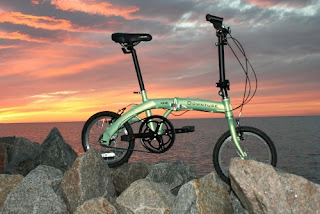If
you are looking for a RV bike, you
need to look no further than Downtube. You will be able to find a bike that
will easily be able to taken on your next RV trip.
Finding
the correct RV bike rack can be a challenge given the huge array of options. There
are many factors to look at when sorting through the variety options on which
rack is best for your RV. Before choosing the exact rack, you need to consider
the bike rack in conjunction with how compatible it is going to be with your
RV, the bikes you intend to carry on it and safety.
Kind and Number of Bikes Carrying
There
is quite a long list of RV bike rack options for all types of bikes.
Bike Wheel Mount
This
type of rack is going to secure the bike by its wheels. The wheels are placed
inside the rails and held in place with tie downs. These mounts:
- Are great for loading and unloading bikes.
- Have a capacity that is typically up to four bikes.
Frame Mounted Bike Rack
This
bike rack is going to secure the bike in place by one or two carry arms that
hold the top tube/bar of the bike and it also allows the bike to dangle below. The
racks work on any size bike. These racks:
- Are the most common type of mount to have; and
- Have many features that swing or fold out of the way.
RV Bike Rack Mounting
A
bike rack can be mounted in four basic ways:
- Bolt to bumper – This method takes a solid bumper that is welded to the frame and is made of steel.
- Mount to ladder – Your RV must have a ladder for this method. Most RV bike racks are made to fit most types of steps but you need to make sure that the one you purchase fits your specific ladder.
- Install into the trailer hitch – Hitch mounted racks are the most popular kind. With this method, you use the trailer hitch that you attach a bike rack to the back or front of your vehicle.
- Bolt to trailer tongue – This is one of the more complex methods. Many people prefer to add a bike rack over the propane/battery box area on the trailer tongue.
RV Bumper Bike Rack
With
these racks, the RV bike rack is mounted to the bumper on the rear of the RV.
U-bolts are normally used in order to secure it to the actual bumper. There are
many variations to accommodate different RV designs and the needs of the user.
This is a common method for travel trailers, fifth wheel trailers and pop up
campers. The racks are straightforward in order to install including just a few
U-bolts and some minor assembly of the actual bike rack itself. Bumper racks
also have the added benefit of not restricting access to your tow vehicle.
Conclusion
An
RV
bike is a definite must to have if you have an RV. There are many
different racks that you can choose from for your RV to carry your bike.
Source: Click
Here


